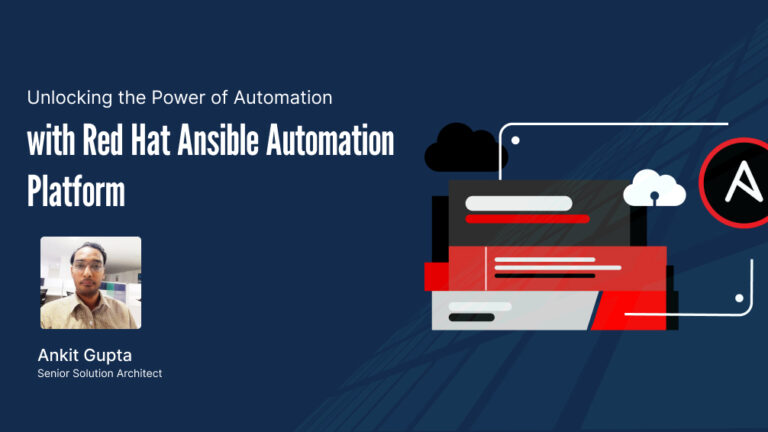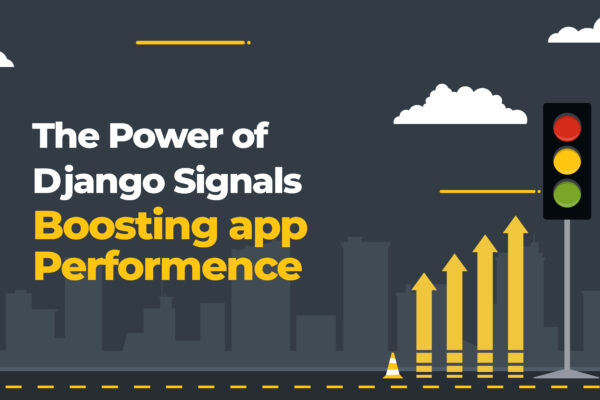What is Red Hat Ansible Automation Platform?
Red Hat Ansible Automation Platform is a fully packaged automation solution developed by Red Hat prominent leader in software and enterprise solutions.
It is designed to simplify and streamline IT operations by enabling organizations with offering a flexible, stable, and security-focused foundation for deploying end-to-end automation solutions to automate various tasks and processes, enhancing efficiency and reducing manual intervention.
When was it Developed?
Red Hat Ansible Automation Platform was developed evolved with Ansible project, which is the foundation of the platform, was initially created in 2012.
Red Hat acquired Ansible, Inc. (the company behind Ansible) in 2015, and since then, it has continued to develop and enhance the Ansible Automation Platform.
Red Hat Ansible Automation Platform (Latest Version 2.4) was launched in November 2019 as a new offering that combines the popular open source automation tool Ansible with other components and services from Red Hat.
Where is it Deployed?
Red Hat Ansible Automation Platform can be deployed in a variety of environments:
On-Premises Data Centers:
Organizations can deploy Ansible in their own data centers to manage & Automate internal infrastructure.
Cloud Environments:
Ansible supports cloud providers e.g AWS, Azure & Google Cloud, suitable for hybrid & multi-cloud environments.
Container Orchestration Platforms:
Ansible integrates with container orchestration platforms such as Kubernetes, simplifying container deployment and management.
Network Automation:
Ansible can be used to automate network & device configurations and operations
Why was it Created?
Red Hat Ansible Automation Platform was created to address the need for efficient and consistent automation of IT operations. The key reasons behind its development include:
Operational Efficiency:
To reduce manual, repetitive tasks and streamline IT operations, resulting in increased efficiency.
Cost Reduction:
To cut operational costs by minimizing the need for extensive human resources in managing systems and processes.
Consistency:
To ensure consistent and standardized processes across the organization, reducing the risk of errors.
Scalability:
To provide a scalable solution that can meet the automation needs of organizations of various sizes.
Security and Compliance:
Organizations enforce security policies and maintain compliance throughout the automation process. Using Red Hat Ansible for Streamlining Operations.
Who Uses it?
Red Hat Ansible Automation Platform is used by a wide range of professionals and organizations, including:
IT Operations Teams: Ansible to automate routine tasks, such as software provisioning, patch management, and configuration changes.
Developers: Developers use Ansible to accelerate application deployment and development by automating infrastructure provisioning and configurations.
Security Teams: Ansible helps security teams ensure security policies and compliance are consistently maintained across the organization.
Business Owners: Ansible reduces operational costs, improving profitability and increasing operational agility.
Large Enterprises and SMBs: The platform is scalable and suitable for businesses of all sizes, from large enterprises to small and medium-sized businesses. Automating Cloud Infrastructure with Red Hat Ansible.
How Does Red Hat Ansible Automation Platform Work?
Red Hat Ansible Automation Platform operates using a combination of the following key components and features used in implementing enterprise-wide automation:
Key Components:
Automation controller: A web-based user interface and RESTful API that provides centralized management, coordination, and execution of Ansible Playbooks across your entire IT infrastructure. It also includes role-based access control, job scheduling, inventory management, credentials vault, and graphical dashboard.
Private automation hub: A secure repository for managing and distributing Ansible Content Collections and execution environments. It allows you to curate, certify, and share content across your organization. It also integrates with automation controller and automation services catalog to provide a consistent user experience.
Automation services catalog: A service that enables users to order and deploy approved IT services from a curated catalog. It leverages automation controller and private automation hub to provide self-service provisioning and governance of IT resources.
Automation analytics: A service that provides insights into the health, usage, and performance of your automation deployments. It collects data from automation controller and private automation hub to help you optimize your automation workflows, identify issues, and improve compliance.
Automation mesh: A feature that allows you to scale up and distribute execution capacity across multiple automation controller instances. It enables you to run jobs on the most suitable node based on availability, location, and tags.
Execution environment: A containerized runtime environment that includes everything needed to run Ansible Playbooks, such as Ansible Core, Python dependencies, modules, plugins, and roles. It ensures portability and consistency of your automation across different platforms.
Ansible Content Collection: A standardized package format for bundling and distributing Ansible content, such as roles, modules, plugins, playbooks, and documentation. It allows you to organize and share your automation content more easily.
Ansible Playbook: A YAML file that defines a set of tasks to be executed by Ansible on one or more hosts. It is the core component of Ansible automation that describes the desired state and configuration of your IT infrastructure.
Automation in Ansible is accomplished through playbooks, which are written in YAML and define a series of tasks and actions to be executed on target systems. It uses a data-driven language called YAML or Jinja to define the automation logic.
Registry plugin: A plugin that allows you to interact with external registries, such as Docker Hub or Quay.io, to pull or push execution environments or content collections. It supports authentication, authorization, and encryption of the communication with the registries.
3rd party integration: A feature that allows you to integrate Ansible Automation Platform with other tools and services, such as cloud providers, source control systems, CI/CD pipelines, notification systems, etc. It enables you to automate complex workflows across different domains and technologies.
Modules: Ansible provides a vast library of pre-built modules that simplify automation tasks, such as system provisioning, configuration management, and application deployment. Modules can be combined within playbooks to create powerful automation workflows.
Dynamic Inventories: Ansible maintains dynamic inventories, which automatically adapt to changes in the infrastructure. This allows for the dynamic management of systems and devices.
Ad-Hoc Commands: Administrators can use Ansible to run ad-hoc commands, facilitating quick and one-off tasks without the need for writing full playbooks.


Product Developed by Industry Leaders Similar to Red Hat Ansible Automation Platform
Puppet: Puppet, developed by Puppet Labs, is an automation and configuration management tool that is widely used for infrastructure as code (IaC) and automation of IT processes.
A platform that enables users to automate the provisioning, configuration, orchestration, and management of their IT infrastructure and applications. It uses a declarative language called Puppet DSL.
Chef: Chef Software, is another popular automation and infrastructure as code tool that provides solutions for configuring and managing systems. A platform that provides a unified workflow for infrastructure automation, application deployment, compliance management, and security policy enforcement. It uses a declarative language Ruby DSL.
SaltStack: SaltStack, offers automation and orchestration solutions for managing and securing infrastructure and application environments.
Scaling Up Automation with Red Hat Ansible
Scaling up automation with Red Hat Ansible is essential for organizations looking to manage large and complex IT environments efficiently. Here are some key considerations and strategies for scaling up automation with Red Hat Ansible:
Inventory Management: Maintain an organized and up-to-date inventory of your infrastructure. Ansible supports dynamic inventories, which can automatically discover and include new hosts, making it easier to scale up without manual intervention.
Modular Playbooks: Break down your automation tasks into smaller, modular playbooks and roles. This allows you to manage and update specific components of your infrastructure separately and makes it easier to reuse automation code.
Parallel Execution: Ansible is designed for parallel execution, allowing you to run automation tasks on multiple hosts simultaneously. This speeds up the automation process and is crucial for scaling to a larger infrastructure.
Asynchronous Operations: Some tasks may take a long time to complete, especially in large environments. Ansible supports asynchronous operations, allowing you to start a task and check its status later, which is important for long-running operations.
Optimized Playbook Design: Write efficient playbooks that are optimized for performance. Avoid redundancies and ensure that your tasks are idempotent, so running them multiple times doesn’t have unintended consequences.
Vault for Secrets: Ansible Vault to encrypt and protect this information. This ensures that your automation is secure and compliant, especially at scale.
Ansible Tower: Red Hat Ansible Tower is a web-based user interface for Ansible that provides enhanced automation and management capabilities. Tower allows for the scheduling of jobs, role-based access control, and self-service automation, making it particularly valuable for scaling up automation efforts.
Role-Based Access Control (RBAC): RBAC in Ansible Tower to control who can execute automation tasks and what they can do. This is essential for managing permissions in a large organization.
Git Integration:Use version control systems like Git to manage your Ansible playbooks and roles. This ensures that changes are tracked, and rollbacks are possible in case of issues.
Monitoring and Reporting: Implement monitoring and reporting tools to keep an eye on the health and performance of your automation tasks. This is especially important at scale, as it helps identify and address issues quickly.
Testing and Validation: Develop a robust testing and validation process for your automation code. Automated testing ensures that changes don’t break existing functionality.
Documentation: Create comprehensive documentation for your Ansible automation. Clear and well-maintained documentation is vital for collaboration and knowledge sharing, especially when multiple team members are involved.
Community and Support: Take advantage of the Ansible community and Red Hat’s support resources. The community can offer guidance, share best practices, and provide pre-built roles and playbooks that can accelerate your automation efforts.
Scalability Plan: Develop a clear plan for scaling your automation efforts. Consider how your infrastructure may grow in the future and design your automation architecture accordingly.
Scaling up automation with Red Hat Ansible is a strategic move for organizations seeking to streamline IT operations, improve efficiency, and ensure consistency across a large and diverse infrastructure.
By following these best practices and leveraging Ansible’s features, you can effectively manage and automate tasks across your organization, regardless of its size and complexity.
Conclusion
Red Hat Ansible Automation Platform is a versatile and powerful solution that empowers organizations to automate their IT operations effectively. Whether it’s reducing manual tasks, scaling operations, managing complex system configurations, ensuring security and compliance, or future-proofing IT processes, Ansible provides the tools and capabilities to meet diverse automation needs.
Ansible Automation Platform offers a comprehensive automation framework and ecosystem that enhances operational efficiency, reduces costs, and maintains consistency, making it a valuable asset for businesses of all sizes.




